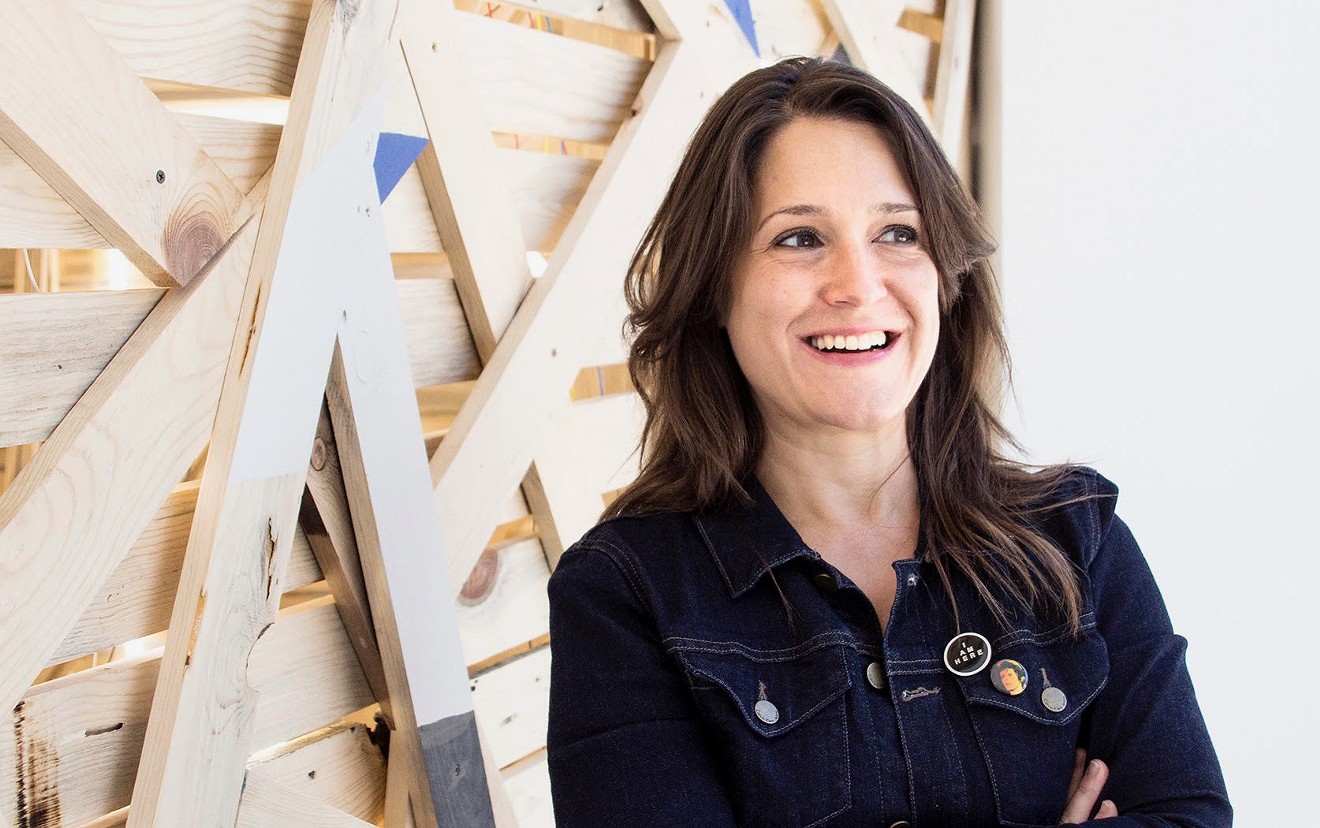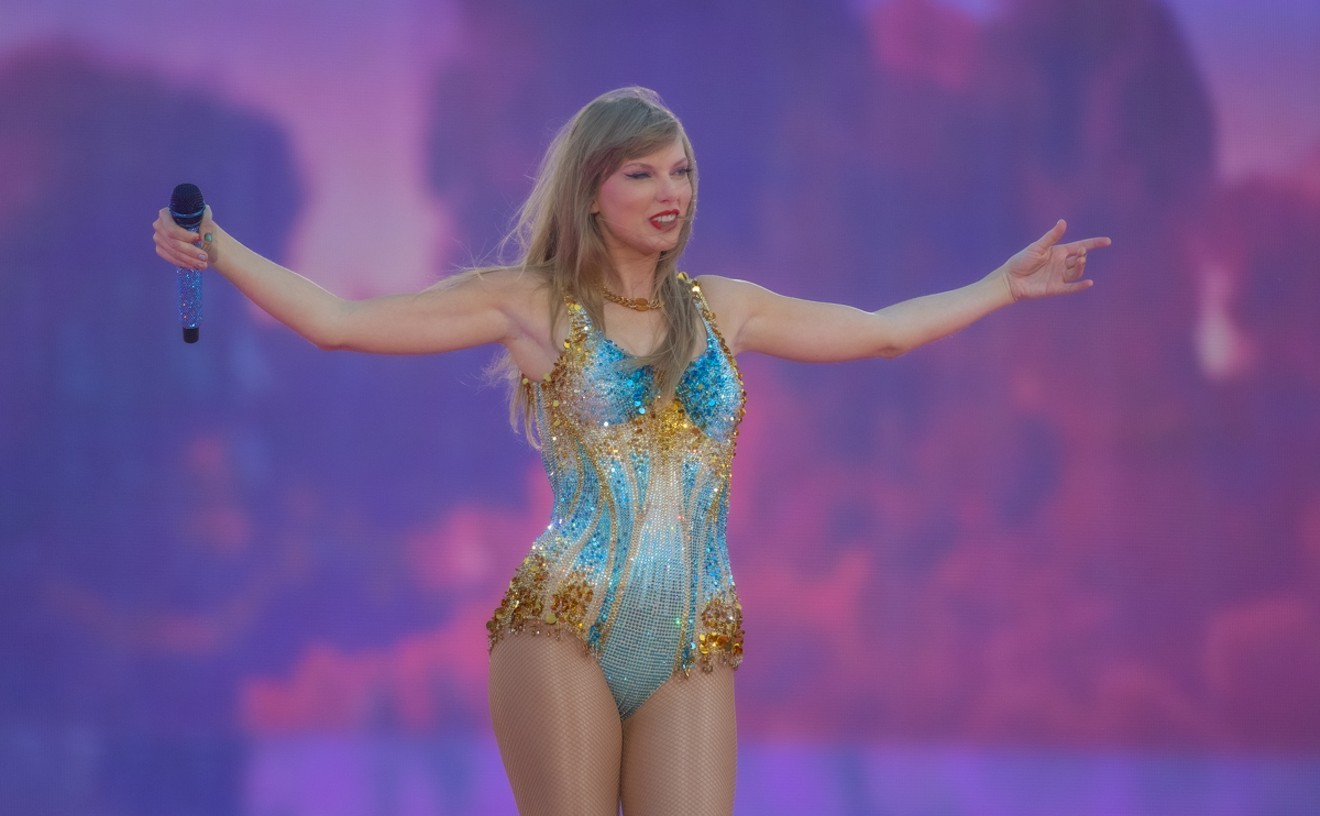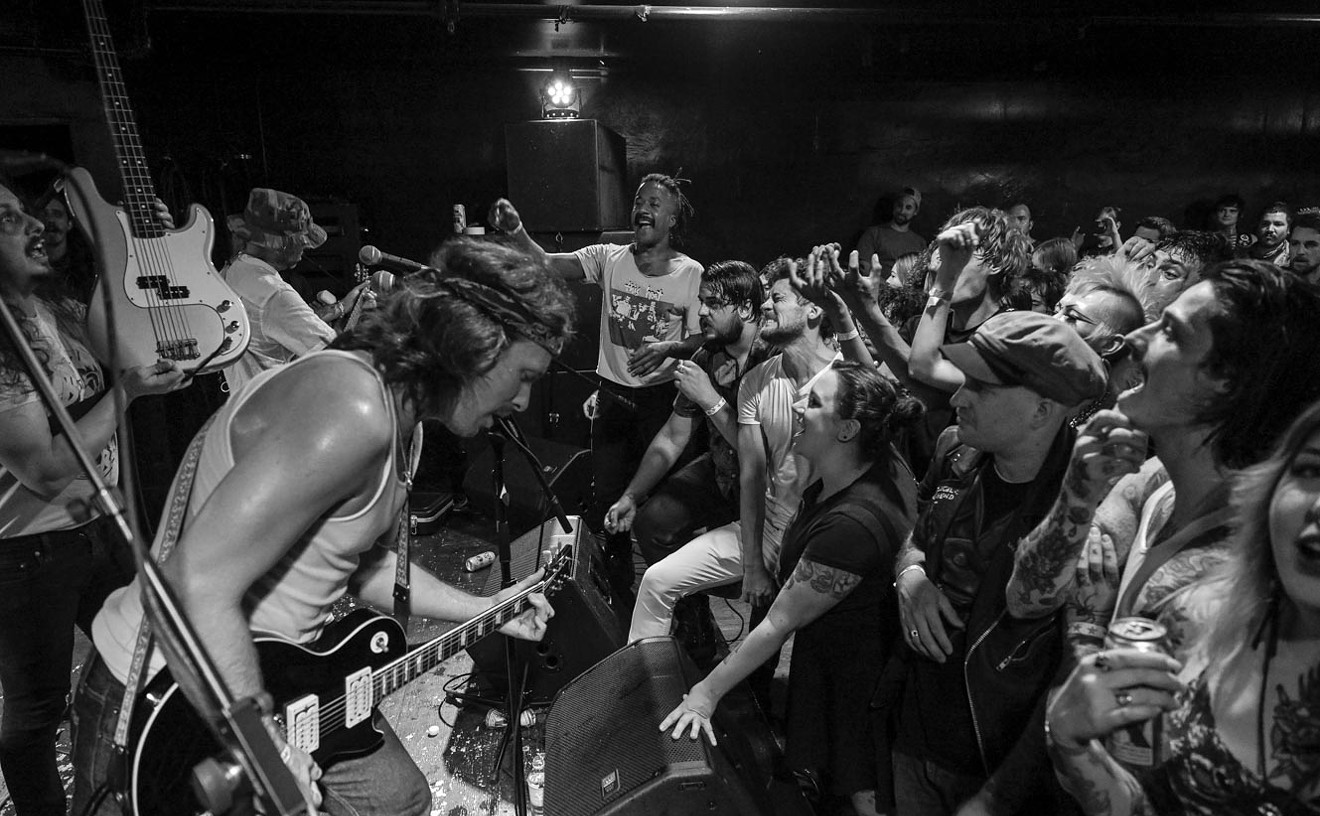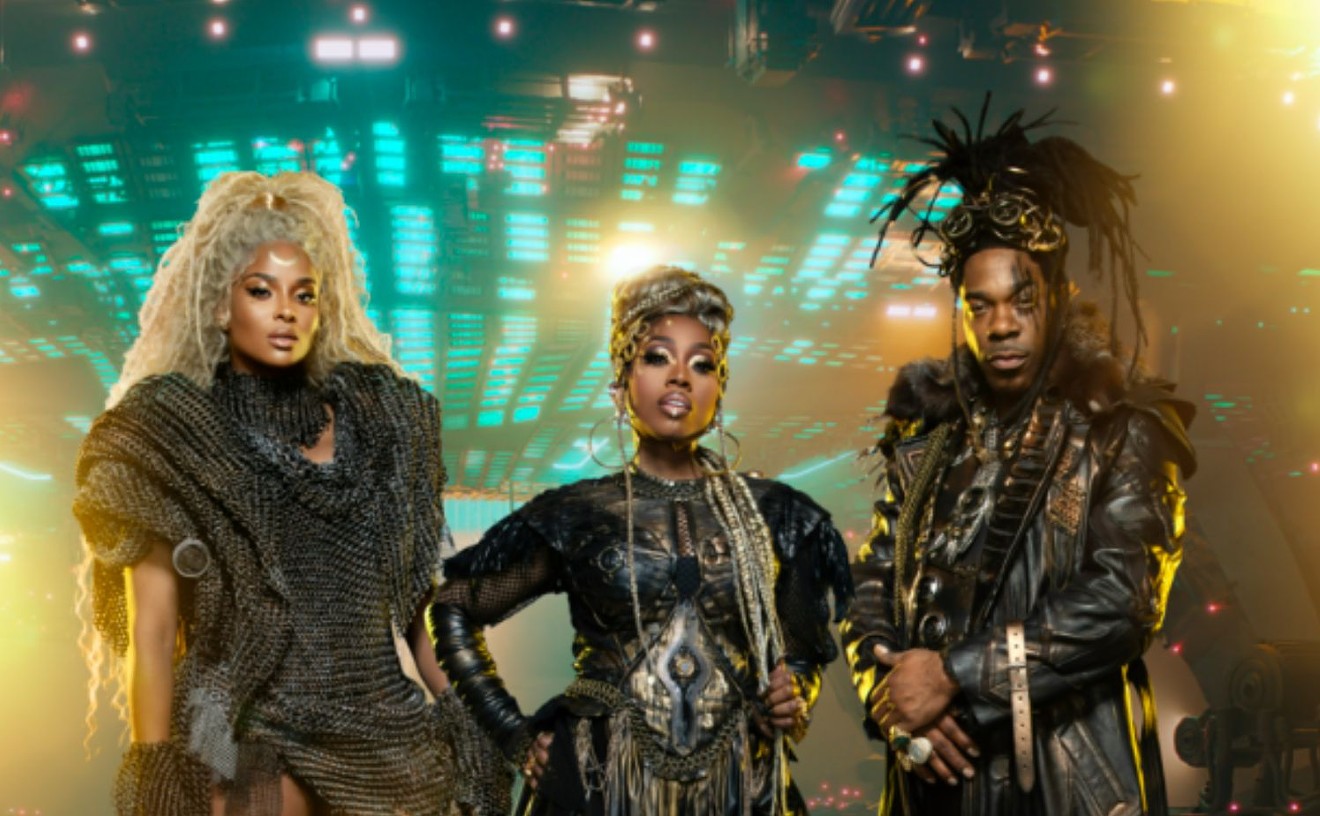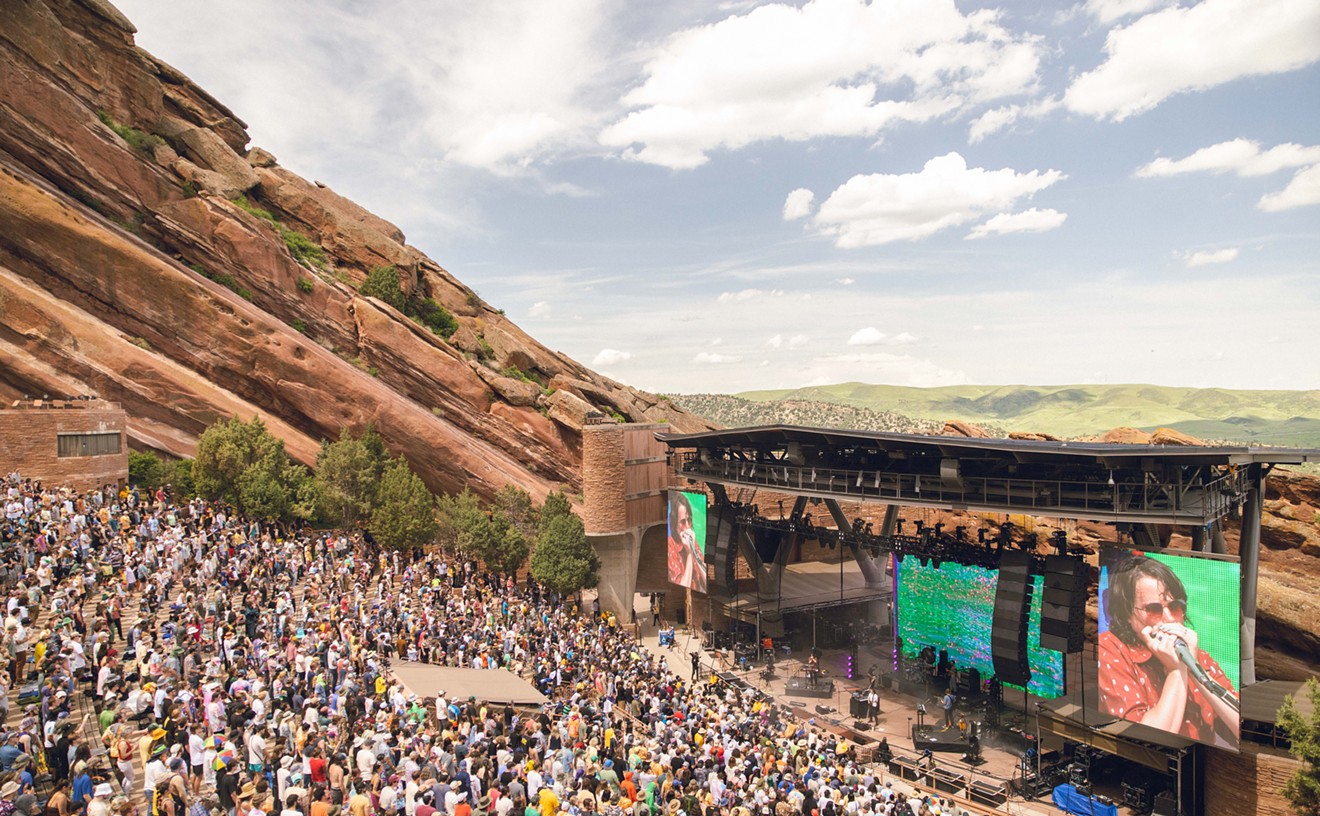Maria Elena Buszek is known for her playlists. As students walk into her art history classes at the University of Colorado Denver, she plays music from whatever period she's discussing, setting the mood for the lecture. Recently, New York City's Museum of Arts and Design asked Buszek to create a punk-era playlist to go with its current exhibit, Punk Graphics: Too Fast to Live, Too Young to Die; instead of sticking to the same-old male-led bands, she put together an all-women list of artists. Hear the results for yourself on Spotify.
This summer, the art curator and academic has a new book, A Companion to Feminist Art, coming out and a show she has organized on display at the Bemis Center for Contemporary Arts in Omaha.
Westword caught up with her to talk about the new book, gender representation in Denver's art world and the Punk Graphics show.
Westword: So, the punk playlist was your contribution to Punk Graphics: Too Fast to Live, Too Young to Die, at the Museum of Arts and Design in New York City. How did this unlikely cultural combination come about?
Maria Elena Buszek: The Punk Graphics show is pulled mostly from the collection of Andrew Krivine, who is a collector of punk music and ephemera, and exactly the kind of person I grew up with in the music scene: curious, exceedingly knowledgeable about all kinds of culture, and not at all precious about art-world collecting concerns. These were collectors and historians who were not afraid to also be fans, and whose fandom didn't detract from the depth or sophistication of their knowledge. So, I was psyched to see this kind of collection given space at art museums: first, at the Cranbrook Art Museum, which is very nearby where I grew up in Detroit, and now at the Museum of Arts and Design. The Punk Graphics show is also exciting to me because it is so representative of the visibility of women in this scene from its infancy – which is inescapable when you go back to the actual music, concerts, fanzines of the era, but which, again, have been largely written out of emerging histories.
Anyhow, because I'm one of the few art historians out there to be working on this stuff, they approached me about curating a playlist for the show – but, since it sounded like they were mostly asking celebrity musicians and journalists to contribute the other playlists, I had a feeling that there was likely to be a lot of confirmation of the dude canon – Ramones, Sex Pistols, Clash – in which the other guests were invested, and probably not a lot connected to punk's intersections with reggae, dance music and early hip-hop.
For my lodestar, I used this great quote from punk-era music journalist Caroline Coon: “It would be possible to write the whole history of punk music without mentioning any male bands at all.”
So, you’re writing women back into the history, where they belong?
Yes. As another example, I’ll also put in a plug for a show I'm curating this summer with the multimedia artist Raven Chacon and musician Robert Aiki Aubrey Lowe at the Bemis Center for Contemporary Arts in Omaha. It focuses on contemporary artists pushing the boundaries of "music" and "sound art" in their work (and which happens to consist of mostly women artists and artists of color):
Meanwhile, your latest book, A Companion to Feminist Art, is about to hit the streets. Of course, women have been way underrepresented in the art world. How is that situation changing? Who is doing a good job at making that change?
As to my book, yes. I'm not sure how much the under-representation of women or artists of color in the art world is changing – slowly, and certainly not fast enough. But I think that the growth of online arts criticism, and writers and artists just willing to put their work out there beyond academic audiences, is important. It was heartening to me that Maura Reilly's special issue on representation in the art world for ArtNews went viral a couple of years back, as well as Micol Hebron's Gallery Tally project from around the same time, which has generated a lot of thought-provoking, but meme-worthy images that have updated and made much more local – and, thus, relatable – what the Guerrilla Girls have been doing for decades.
And, honestly, I feel as if these conversations have empowered more local venues all around the U.S., which can be much more nimble and responsive than behemoths like the Metropolitan Museum of Art or the Smithsonian museums to respond with far more representational exhibition and collecting habits. The shows at Denver’s Museum of Contemporary Art have been 50/50 for quite a while now, for example.
And my former student Sharifa Moore just did her art history thesis on representation in Denver's Month of Photography, which her research showed is, as of this year, also 50/50 – and, in tandem, she contributed to these statistics by curating the all-woman show Whichcraft at the Next Stage Gallery. So, I feel like Denver is a good example of a local scene doing an excellent job at modeling best practices for bigger art communities. The fact that MoMA is shutting down this summer to expand its spaces specifically to show more work by women and artists of color, to me, shows how this kind of "thinking locally" pressures the bigger cities and institutions to respond, rather than the other way around.
But, obviously, until the percentages in the art world's exhibiting and collecting practices look more like who is graduating from art programs, we won't be anywhere near parity. Art graduates at both the BFA and MFA levels in the U.S. have been about 70 percent women for the last several years, but it's rare to find any region or major institution whose exhibition schedule or collections reflect this fact.
One of your interests has been in the connection between art and music. Talk a little about that.
I grew up in pretty working-class neighborhoods around the Midwest, where nobody went to art museums or even what we might call "cultural events" beyond, perhaps, narrowly defined ones pertaining to their heritage or religion. However, music was always around – in fact, my dad is a musician and record collector – and so a lot of the fundamentals of aesthetics, research, and analysis that I discovered when I first took an art history class in college were accidentally instilled in me growing up as a music fan, and like my dad, record-collector. In fact, a lot of the music I gravitated to growing up was by musicians from the punk, no-wave, and hip-hop communities that intersected with the art world: people like Grace Jones, Lydia Lunch, and Ann Magnuson, who were musicians but also performance artists, and collaborated with visual artists, filmmakers, and writers. So, working in record stores and at a pirate radio station in high school and college, just following the musicians I grew up interested in, led me into all these other cultural avenues, as well as back to predecessors like John Cage, Yoko Ono and Laurie Anderson. Once I decided to pursue studies and then a career in art history, these much-longer-standing interests wound up influencing the kinds of artists I wrote about, in that most of them had connections to popular culture, which my publications and curatorial practices delve into.
At a certain point, though, I realized that even though this generation of artists around the so-called "Pictures Generation" of the 1970s was getting more and more attention in the last few years, the women who were at the foundations of these scenes were largely being disappeared from it where the work intersected with music. So, you have shows like the Chicago MCA's Sympathy for the Devil: Art and Rock and Roll Since 1967, which included only ten women in its sprawling checklist, or the Met's Punk: Chaos to Couture show, which had equally dismal representation; neither catalog included a single woman contributor, either. In response, my current book project is, essentially, an effort to write these women back into this history of art-music hybrids since the '70s, while the ink is still damp.
[
{
"name": "Air - MediumRectangle - Inline Content - Mobile Display Size",
"component": "12017618",
"insertPoint": "2",
"requiredCountToDisplay": "2"
},{
"name": "Editor Picks",
"component": "17242653",
"insertPoint": "4",
"requiredCountToDisplay": "1"
},{
"name": "Inline Links",
"component": "18838239",
"insertPoint": "8th",
"startingPoint": 8,
"requiredCountToDisplay": "7",
"maxInsertions": 25
},{
"name": "Air - MediumRectangle - Combo - Inline Content",
"component": "17261320",
"insertPoint": "8th",
"startingPoint": 8,
"requiredCountToDisplay": "7",
"maxInsertions": 25
},{
"name": "Inline Links",
"component": "18838239",
"insertPoint": "8th",
"startingPoint": 12,
"requiredCountToDisplay": "11",
"maxInsertions": 25
},{
"name": "Air - Leaderboard Tower - Combo - Inline Content",
"component": "17261321",
"insertPoint": "8th",
"startingPoint": 12,
"requiredCountToDisplay": "11",
"maxInsertions": 25
}
]

